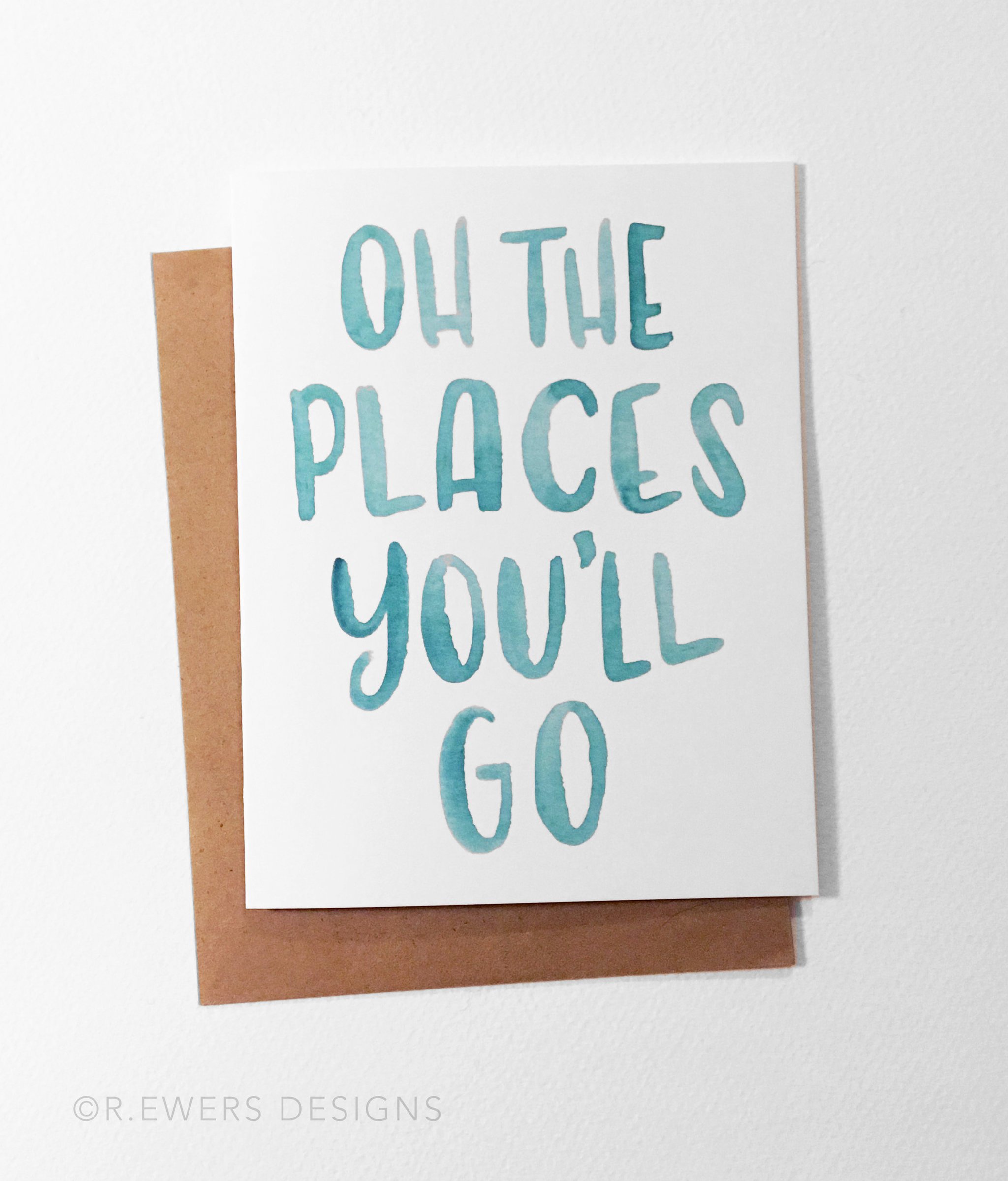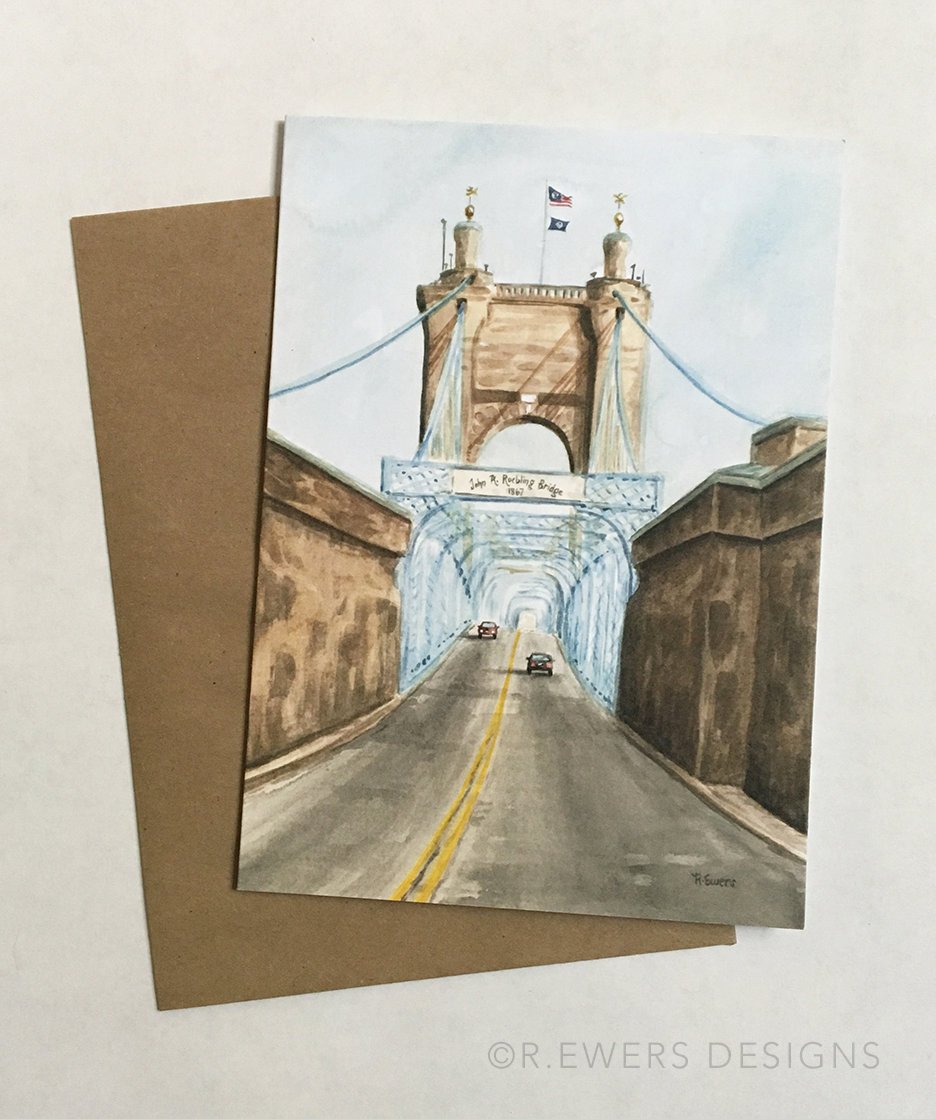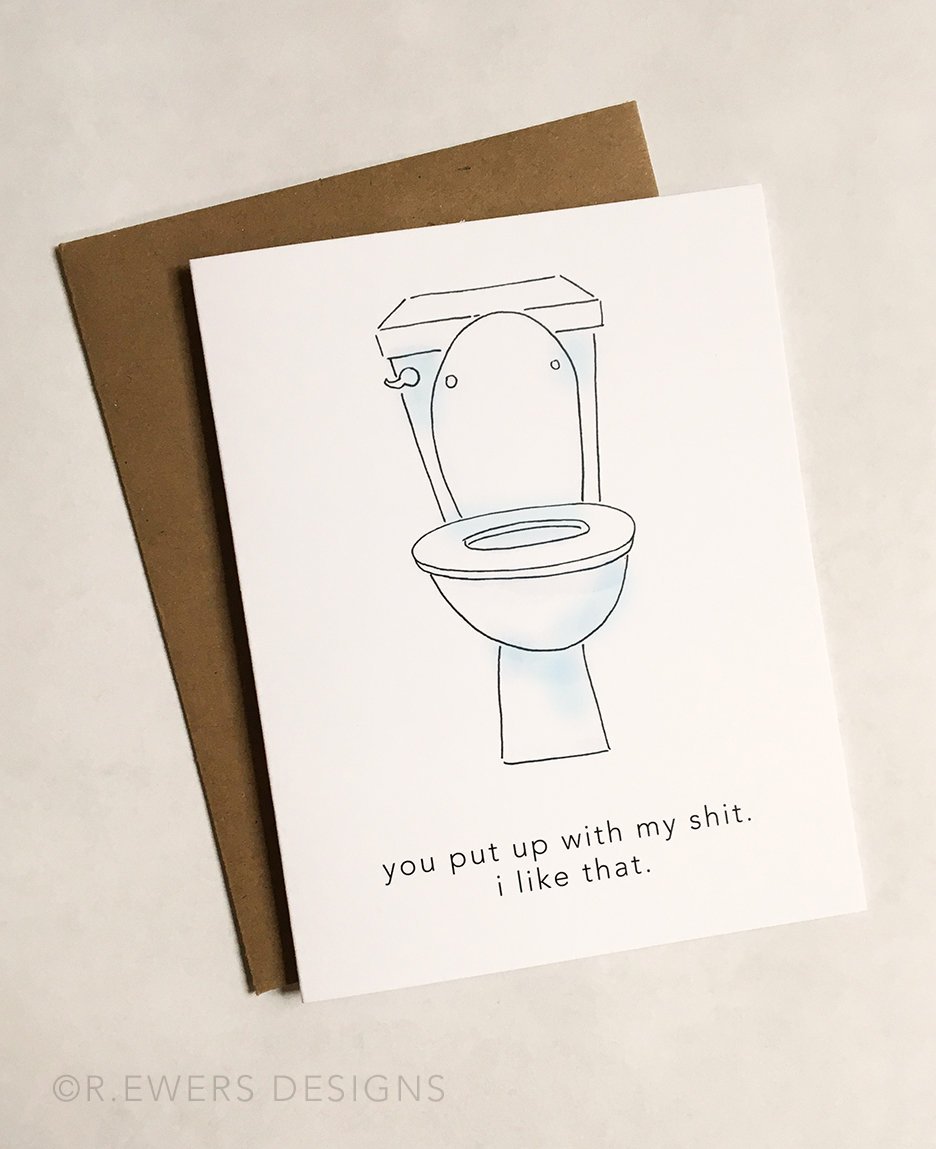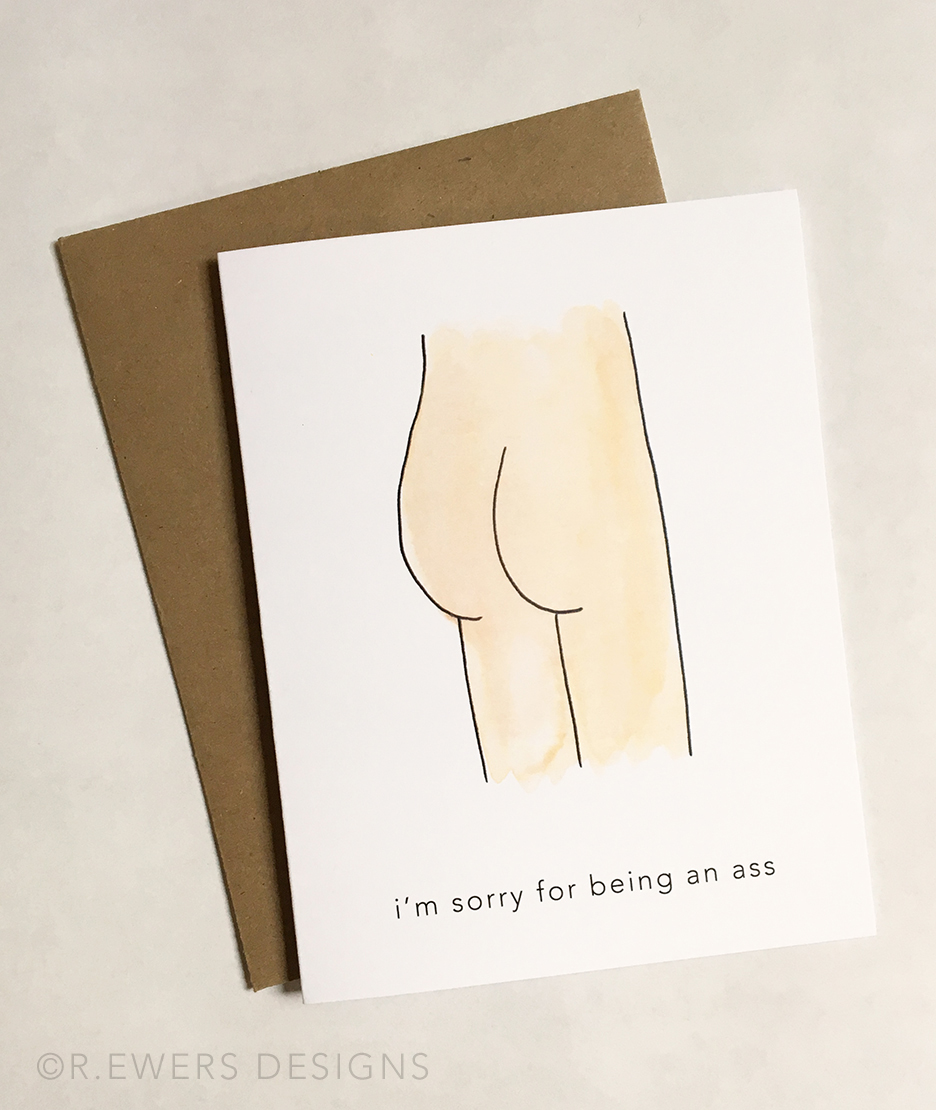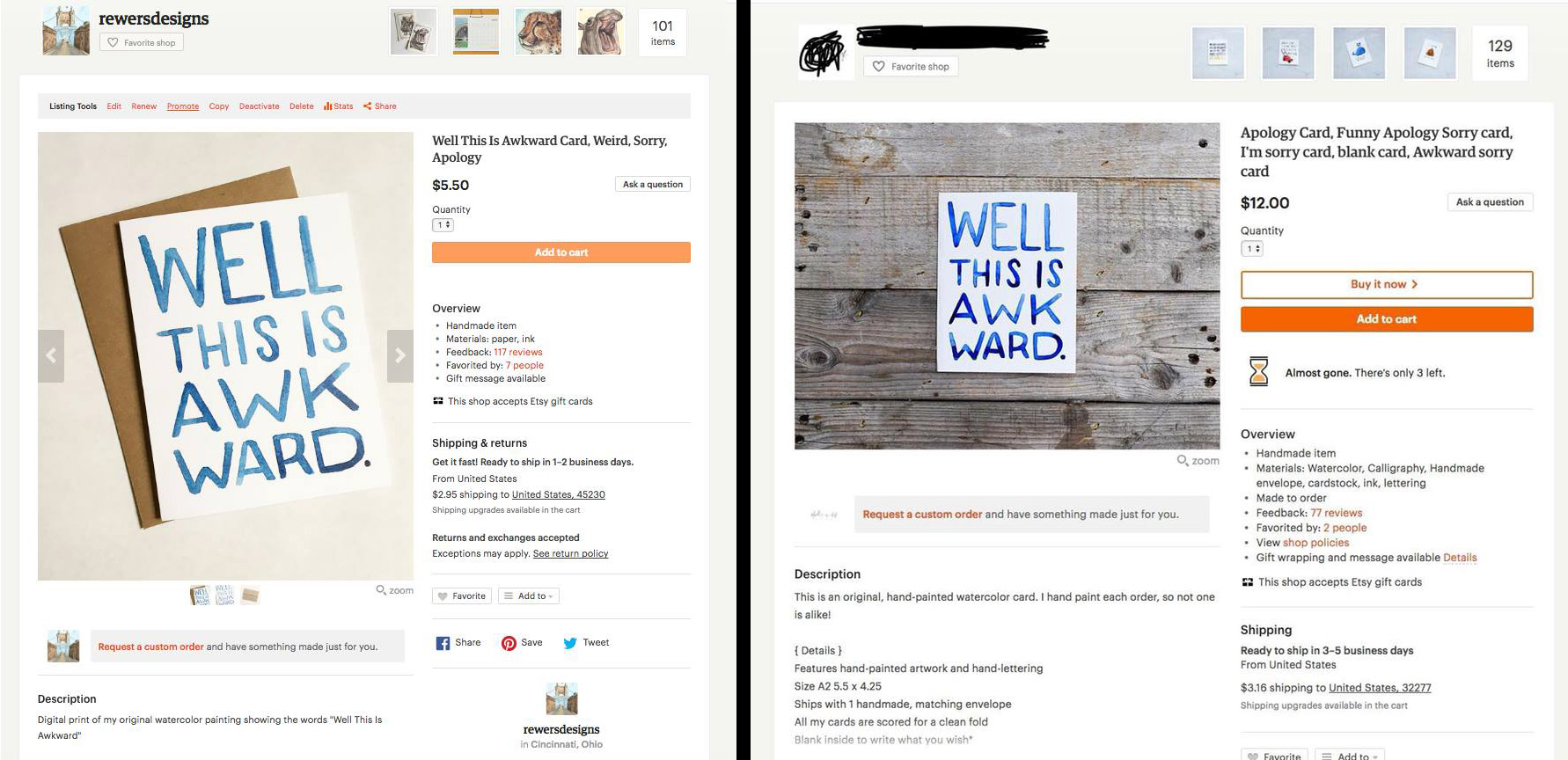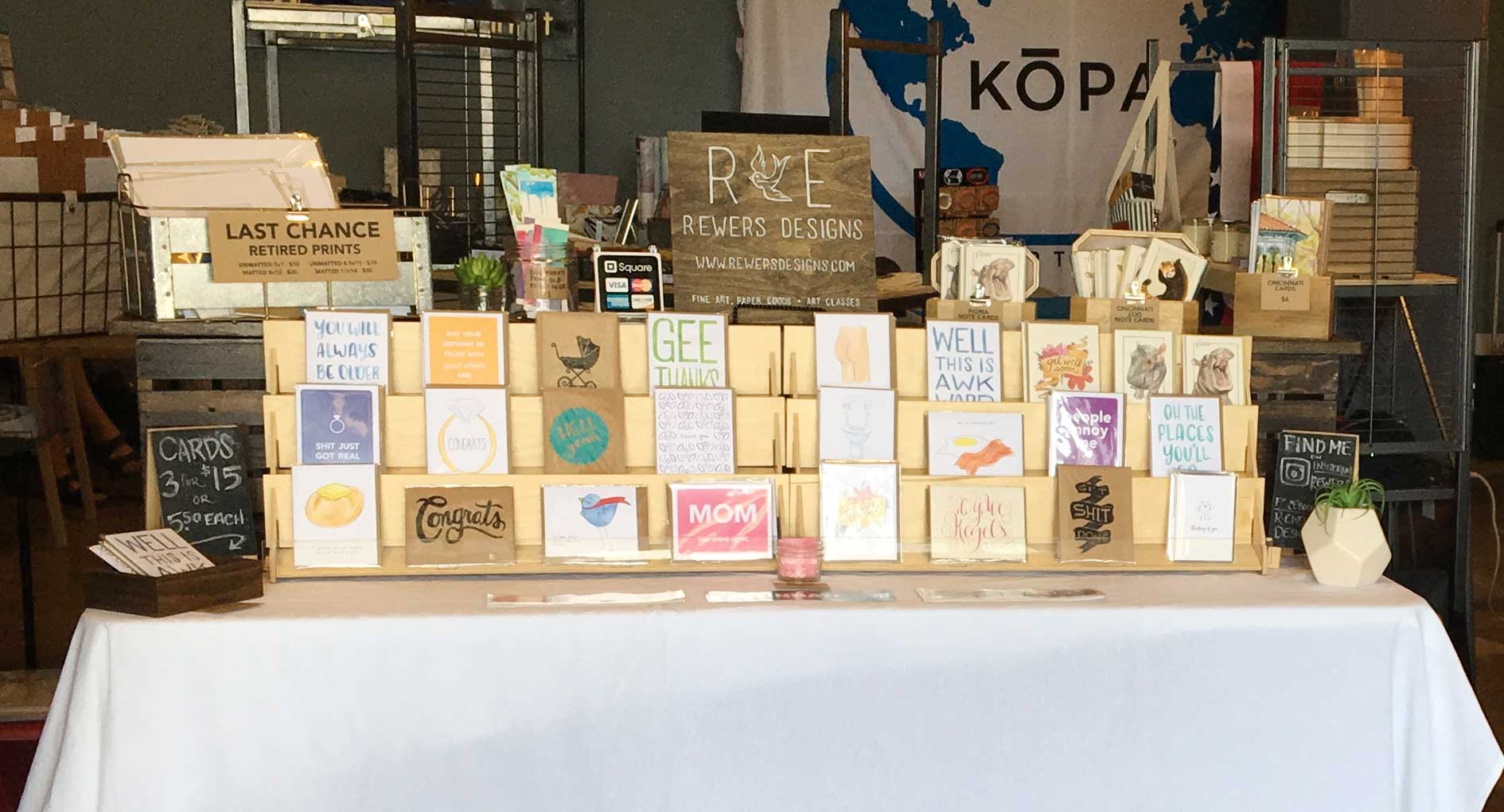Turning Art Into a Business
From Designing Cards to Dealing with Plagiarism, and Everything in Between
BY ROBIN EWERS CARNES
I get the question quite often, “How do you get into selling greeting cards?” Well, for me, it started a long time ago. I can remember back to fifth grade, sitting in class, doodling away in my notebook, seemingly not paying attention to the teacher. Drawing actually helped me focus on what the teacher was saying.
I was drawing a character, a funky-looking chick with spiky short hair, a crop top, and bell bottom jeans. She would become the basis for greeting cards that I made for my family and friends. With this character, I dreamt of having my own greeting card line someday. But how? Companies like Hallmark, American Greetings, and Carlton Cards seemed like unreachable giants to a 10-year-old like me.
I was drawing a character, a funky-looking chick with spiky short hair, a crop top, and bell bottom jeans. She would become the basis for greeting cards that I made for my family and friends. With this character, I dreamt of having my own greeting card line someday. But how? Companies like Hallmark, American Greetings, and Carlton Cards seemed like unreachable giants to a 10-year-old like me.
I’ve always had my nose in a sketchbook — always drawing, doodling, and creating. Ever since that day in fifth grade, I’ve known I wanted to have my own business. To my 10-year-old self, I was equally optimistic and determined, but confused about how one could earn an income from both simple drawings and fine art alike. Places like New York, Miami, and Chicago were mentioned in conversations about where you had to go to “make it.”
At one point, I wanted to go into fashion merchandizing, and was told that I would most likely have to move to L.A. to get a job in that field. I had no interest in leaving my hometown of Cincinnati, so I decided to try a different path. The more I continued to draw and paint, the more Cincinnati flourished into a city that people not only wanted to stay in, but a place that people started to flock to from their own hometowns. Neighborhoods were getting revitalized and small businesses started popping up, effectively drawing people into these areas.
At one point, I wanted to go into fashion merchandizing, and was told that I would most likely have to move to L.A. to get a job in that field. I had no interest in leaving my hometown of Cincinnati, so I decided to try a different path. The more I continued to draw and paint, the more Cincinnati flourished into a city that people not only wanted to stay in, but a place that people started to flock to from their own hometowns. Neighborhoods were getting revitalized and small businesses started popping up, effectively drawing people into these areas.
Over time, I realized that for me, it wasn’t about moving somewhere to “make it.” It was about “making it” where I called home. Throughout those years, not only did brick and mortar shops start appearing, but amazing resources like Etsy, various e-commerce sites, and local vendor markets started materializing, and it got easier to stay put to make something of yourself.
When I first got started with my small business many years ago, handmade products seemed to make consumers nervous, usually because they had high price tags; it was hard to compete with the low costs of overseas manufacturing. Now, the notion of the “local artisan” and “handmade, handcrafted goods” has been welcomed back with open arms, and it doesn’t need to come with those hefty costs.
When I first got started with my small business many years ago, handmade products seemed to make consumers nervous, usually because they had high price tags; it was hard to compete with the low costs of overseas manufacturing. Now, the notion of the “local artisan” and “handmade, handcrafted goods” has been welcomed back with open arms, and it doesn’t need to come with those hefty costs.
Before I graduated high school, many people told me not to go into fine arts as I’d never get a job. So I went into graphic design instead, since that was the direction visual arts was going. Quite honestly, I think I would have thrived regardless of which direction I went, but studying graphic design provided me with the knowledge of how to set up files for print, work with CMYK and Pantone colors, come up with my branding identity, and, ultimately, set me up for success for running my own business.
Today, I sell prints of my work and greeting cards online, and at a local market called The OFF Market in the Cincinnati neighborhood of Oakley. Walking the fine line between artist and business owner has its challenges, and one needs to wear many hats. It has taken a lot to get where I am today, and every day is different, since there are many moving parts to creating and marketing products.
Today, I sell prints of my work and greeting cards online, and at a local market called The OFF Market in the Cincinnati neighborhood of Oakley. Walking the fine line between artist and business owner has its challenges, and one needs to wear many hats. It has taken a lot to get where I am today, and every day is different, since there are many moving parts to creating and marketing products.
When designing greeting cards, there are many things to consider, like ever-changing trends, types of humor, punchlines, when to make things simple, when illustrations are appropriate, and when to focus on the typeface you use. And that’s just the content. Keep in mind, there are standard sizes to follow, envelope types, and packaging to keep your products from getting damaged.
Most of my best-selling cards actually start as cards that I make for my husband, family, and friends. Sappy or funny, those come from the heart. The majority of my cards lean toward the funny side, because I believe humor and laughter really can be a cure-all. I prefer to have the kind of cards you don’t find in the grocery store aisle, but ones that tend to catch you off guard.
Most of my best-selling cards actually start as cards that I make for my husband, family, and friends. Sappy or funny, those come from the heart. The majority of my cards lean toward the funny side, because I believe humor and laughter really can be a cure-all. I prefer to have the kind of cards you don’t find in the grocery store aisle, but ones that tend to catch you off guard.
I add new items to my shop when I can, but I find that creating quality, relatable cards takes time and, for me, needs to be organic. For example, this toilet card started off as a card for my husband. The image of the toilet and the caption on the front of the card summed up everything I needed to say. What I love about this card is it can be used for multiple different occasions — an “I’m Sorry” card, a Valentine’s Day card, or my personal favorite, a Mother’s Day card. While I have cards that serve a single purpose, such as a simple birthday card, I really enjoy making cards that can be used for a few different reasons. Depending on the consumer’s type of humor and point of view, they can find a card for almost any occasion.
Unfortunately, as artists, we can run into challenges throughout the creative process. One challenge I faced recently was blatant theft; an individual stole my original work and claimed it as their own. And we’re not talking about a couple of similarities, but the actual artwork itself had been digitally copied off my photo and duplicated onto her photos in her Etsy shop.
Thankfully, a Good Samaritan (and fellow Etsy shop owner) brought it all to my attention. She was all too familiar to this kind of plagiarism, as it had happened to her in the past as well.
I am lucky enough to have an incredible support system with a local creative group I meet with regularly. Once they found out about the issue at hand, they came to my defense like a momma bear protecting her cubs. Margot Madison, the woman behind Creative Juice (and featured in Artists on Art magazine, May/June 2018), even penned a blog post about it, reminding us all that not only is it incredibly unethical to steal one’s work and profit from it, but you mess with someone’s livelihood by stealing.
The issue has been resolved for the time being, but not before I contacted the shop owner in question and took action against her. These days, sharing our work to the internet is both thrilling and scary. While the idea of reaching so many people across the world is exciting, it also opens you up to all kinds of people, some of whom decide to take the easy way out and benefit from our hard work. With that said, we can still share our work via social media, and there are things like watermarks we can lay over an image to at least deter someone’s thought of stealing. Close friends of mine asked if I was going to stop sharing my work after my incident happened, and I said absolutely not! I refuse to let that incident define my work and my business.
The issue has been resolved for the time being, but not before I contacted the shop owner in question and took action against her. These days, sharing our work to the internet is both thrilling and scary. While the idea of reaching so many people across the world is exciting, it also opens you up to all kinds of people, some of whom decide to take the easy way out and benefit from our hard work. With that said, we can still share our work via social media, and there are things like watermarks we can lay over an image to at least deter someone’s thought of stealing. Close friends of mine asked if I was going to stop sharing my work after my incident happened, and I said absolutely not! I refuse to let that incident define my work and my business.
Advice for Using a Watermark
Add a watermark to your images by using Photoshop® or an app called Over.
In Photoshop, I create a new layer and add either my logo or my business name with a copyright symbol to that layer. I then drop the opacity of the logo so that it doesn’t take away from the image itself. I usually strategically place the logo in an area that partially lies over the item in the photo, but not so much that it obscures it. To me, there’s nothing great about a beautiful photograph with a large and awkwardly placed logo on it.
If I don’t have Photoshop handy, I use an app called Over. You can add shapes, text and more over top of images right on your phone. I’ve found it to be incredibly useful, especially since I take my product photos with my phone. So everything is together on my phone and I can edit and upload photos on the go.
In Photoshop, I create a new layer and add either my logo or my business name with a copyright symbol to that layer. I then drop the opacity of the logo so that it doesn’t take away from the image itself. I usually strategically place the logo in an area that partially lies over the item in the photo, but not so much that it obscures it. To me, there’s nothing great about a beautiful photograph with a large and awkwardly placed logo on it.
If I don’t have Photoshop handy, I use an app called Over. You can add shapes, text and more over top of images right on your phone. I’ve found it to be incredibly useful, especially since I take my product photos with my phone. So everything is together on my phone and I can edit and upload photos on the go.
When getting started with selling greeting cards, the sentiments and illustrations are only part of it. In order to remain profitable, one must cost out all materials, such as types of paper, printing, envelopes, and packaging — not to mention display units if you plan to sell in person.
When I first started selling my cards at markets, you could say I was a bit inexperienced. Not only was I determined to sell actual handmade cards for that “one-of-a-kind” touch, I was trying to keep my material costs low so I actually ended up making every single card by hand. Let that sink in for a minute. For some reason, I thought buying watercolor paper, individually cutting out each card, scoring it, drawing the design out and then hand painting each one was a better idea than digitally reproducing them. While I certainly kept the aesthetic of an original handmade card and kept my overhead costs low, I was starting to go a little nuts when I couldn’t keep up with the demand of Etsy orders and in-person sales at markets. Not to mention the money I was losing by spending precious time hand-making each card.
After taking a hard look at my numbers and the overall look I wanted to convey with my products, it was time to change things up. I started making an original watercolor design by hand for each of my cards. I would then scan it in and color correct it in Photoshop, before laying out the entire card in Illustrator®. At this point, I needed to make the card the right size to fit a standard envelope, instead of it being “just close enough.”
I found a reliable printer in town who saw my vision of the products I wanted to make. He has helped me tremendously with all the little flaws and nuances I hadn’t thought of yet. From there, I found some cost-effective clear plastic sleeves to encase my cards so that they were packaged neatly, and they were also protected from dirt, fingerprints, and general wear and tear between shows. I finally felt that I had a professional-looking product that I was proud to show off and display at my markets.
I found a reliable printer in town who saw my vision of the products I wanted to make. He has helped me tremendously with all the little flaws and nuances I hadn’t thought of yet. From there, I found some cost-effective clear plastic sleeves to encase my cards so that they were packaged neatly, and they were also protected from dirt, fingerprints, and general wear and tear between shows. I finally felt that I had a professional-looking product that I was proud to show off and display at my markets.
As mentioned, trends change. I have gone through quite a few designs in my years of selling cards. Some I’ve retired completely, and some I’ve redesigned to reflect new trends I’m seeing. I’m a big fan of “if it’s not broken, don’t fix it,” so sometimes the overall sentiment of the card still works, but the design or font doesn’t fit anymore. At that point, I’ll go back to the drawing board and refresh it a bit. It’s important to me to not get stale with the kinds of cards I offer, but I also don’t like to overdo it, and have so many different options that I can’t keep up with inventory overflow.
Every artist’s journey is different when it comes to turning his or her craft into a business, large or small. The obstacles we face throughout become scars we proudly show off once we have finally figured something out. For the most part, for every step of my journey so far, I have taken the path less traveled and figured it out on my own as I went. And the payoff has been completely worth it. I have not been the first to forge this path, nor will I be the last, but I hope I have inspired you to start or continue on your own journey — whatever it may be!
ABOUT THE AUTHOR
Robin Ewers Carnes is a watercolor artist and designer. She graduated from Antonelli College in 2005 with a degree in Graphic Design and worked as a corporate designer in Cincinnati for ten years. She has owned and operated her own business, R.Ewers Designs, for ten years, selling greeting cards and prints of her work, freelancing, and teaching art classes. Carnes has worked on many different public art projects on her own and with ArtWorks Cincinnati, ranging from Big Pig statues to small and large-scale murals, most notably the Ezzard Charles Mural in downtown Cincinnati. She is also one of four administrators for the newly recognized Cincinnati chapter of the global organization of Urban Sketchers. Carnes has won many awards for her work over the years including being voted Best Local Artist in Cincinnati by CityBeat readers.
Artists On Art magazine ● July / August 2018 ● www.ArtistsOnArt.com
